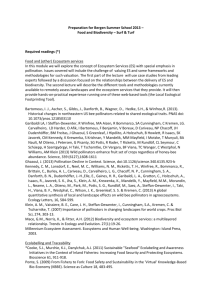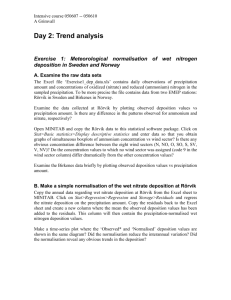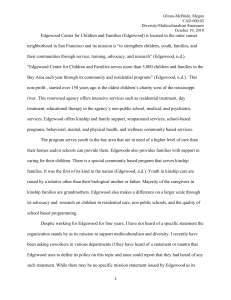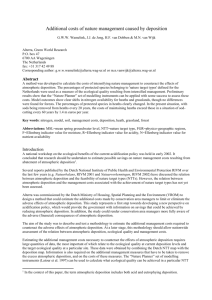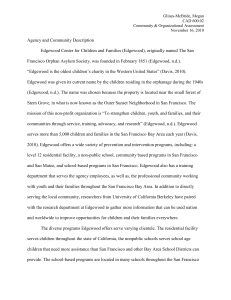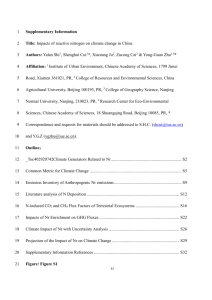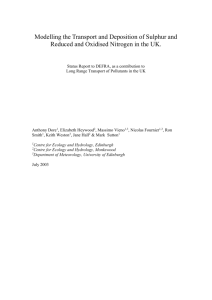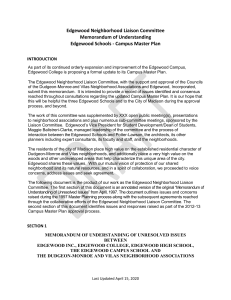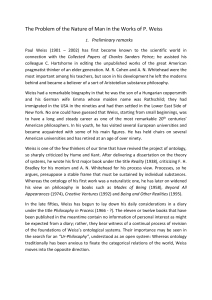Coordinated Management of Monarch Butterfly
advertisement
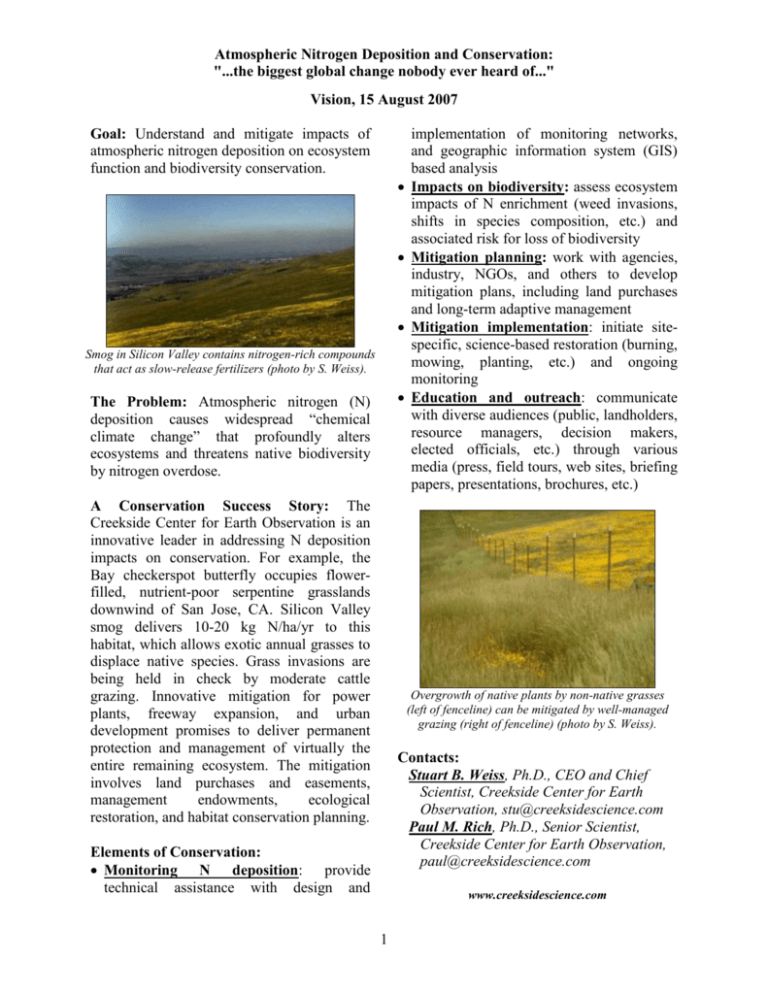
Atmospheric Nitrogen Deposition and Conservation: "...the biggest global change nobody ever heard of..." Vision, 15 August 2007 Goal: Understand and mitigate impacts of atmospheric nitrogen deposition on ecosystem function and biodiversity conservation. Smog in Silicon Valley contains nitrogen-rich compounds that act as slow-release fertilizers (photo by S. Weiss). The Problem: Atmospheric nitrogen (N) deposition causes widespread “chemical climate change” that profoundly alters ecosystems and threatens native biodiversity by nitrogen overdose. A Conservation Success Story: The Creekside Center for Earth Observation is an innovative leader in addressing N deposition impacts on conservation. For example, the Bay checkerspot butterfly occupies flowerfilled, nutrient-poor serpentine grasslands downwind of San Jose, CA. Silicon Valley smog delivers 10-20 kg N/ha/yr to this habitat, which allows exotic annual grasses to displace native species. Grass invasions are being held in check by moderate cattle grazing. Innovative mitigation for power plants, freeway expansion, and urban development promises to deliver permanent protection and management of virtually the entire remaining ecosystem. The mitigation involves land purchases and easements, management endowments, ecological restoration, and habitat conservation planning. implementation of monitoring networks, and geographic information system (GIS) based analysis Impacts on biodiversity: assess ecosystem impacts of N enrichment (weed invasions, shifts in species composition, etc.) and associated risk for loss of biodiversity Mitigation planning: work with agencies, industry, NGOs, and others to develop mitigation plans, including land purchases and long-term adaptive management Mitigation implementation: initiate sitespecific, science-based restoration (burning, mowing, planting, etc.) and ongoing monitoring Education and outreach: communicate with diverse audiences (public, landholders, resource managers, decision makers, elected officials, etc.) through various media (press, field tours, web sites, briefing papers, presentations, brochures, etc.) Overgrowth of native plants by non-native grasses (left of fenceline) can be mitigated by well-managed grazing (right of fenceline) (photo by S. Weiss). Contacts: Stuart B. Weiss, Ph.D., CEO and Chief Scientist, Creekside Center for Earth Observation, stu@creeksidescience.com Paul M. Rich, Ph.D., Senior Scientist, Creekside Center for Earth Observation, paul@creeksidescience.com Elements of Conservation: Monitoring N deposition: provide technical assistance with design and www.creeksidescience.com 1 Atmospheric Nitrogen Deposition and Conservation: "...the biggest global change nobody ever heard of..." July 9 2002 - Jul 1 2003 Edgewood 20 Other Sites I-280 kg-N/ha 15 HNO3 10 NH3 NO2 5 Figure 1.Community Multiscale Air Quality Model (CMAQ) of the California Bay Area. Vehicles, industry, and agriculture contribute to N deposition. Figure 4. Edgewood was mowed in May 2005, at a time of year when most native forbs are senescent but invasive Italian ryegrass was growing and had not yet set seed. h KC -H ig TH KC -L ow JR CA Q R st 0E EW -4 0 EW -E a EW -W es t 0 Figure 2. Ogawa passive samplers monitor pollutant concentrations at Edgewood Natural Preserve (San Mateo County, CA), where Highway 280 carries more than 100,000 vehicles daily. Figure 3. Estimated N deposition at Edgewood and other Bay Area sites. In a case of "drive-by extinction", nitrogen pollution from cars on I-280 fertilized invasive Italian ryegrass, which choked out the Bay checkerspot butterfly's native food plants and literally drove this threatened species to local extinction. Figure 5. One year after mowing at Edgewood (April 2006) unmowed areas (left side of photograph) are far more heavily invaded by grasses than mowed areas (right side of photograph). Figure 6. Butterflies Are Free Day" on April 5, 2007 celebrated reintroduction of the Bay Checkerspot Butterfly to Edgewood Preserve. Participants included community members, government officials, and press (photo by A. Torregrosa). (Figures 1-5 photos by S. Weiss) Weiss, S.B. 1999. Cars, cows, and checkerspot butterflies: nitrogen deposition and grassland management for a threatened species. Conservation Biology 13:1476-1486. Weiss, S.B. 2002. Final report on NFWF grant for habitat restoration at Edgewood Natural Preserve, San Mateo County, CA. Creekside Center for Earth Observation Report, Menlo Park, CA. Key Literature: Fenn, M. E., J. S. Baron, et al. 2003. Ecological effects of nitrogen deposition in the western United States. Bioscience 53: 404–420. Weiss, S.B. 2006. Impacts of nitrogen deposition on California ecosystems and biodiversity, California Energy Commission Report. available online: http://www.creeksidescience.com 2


